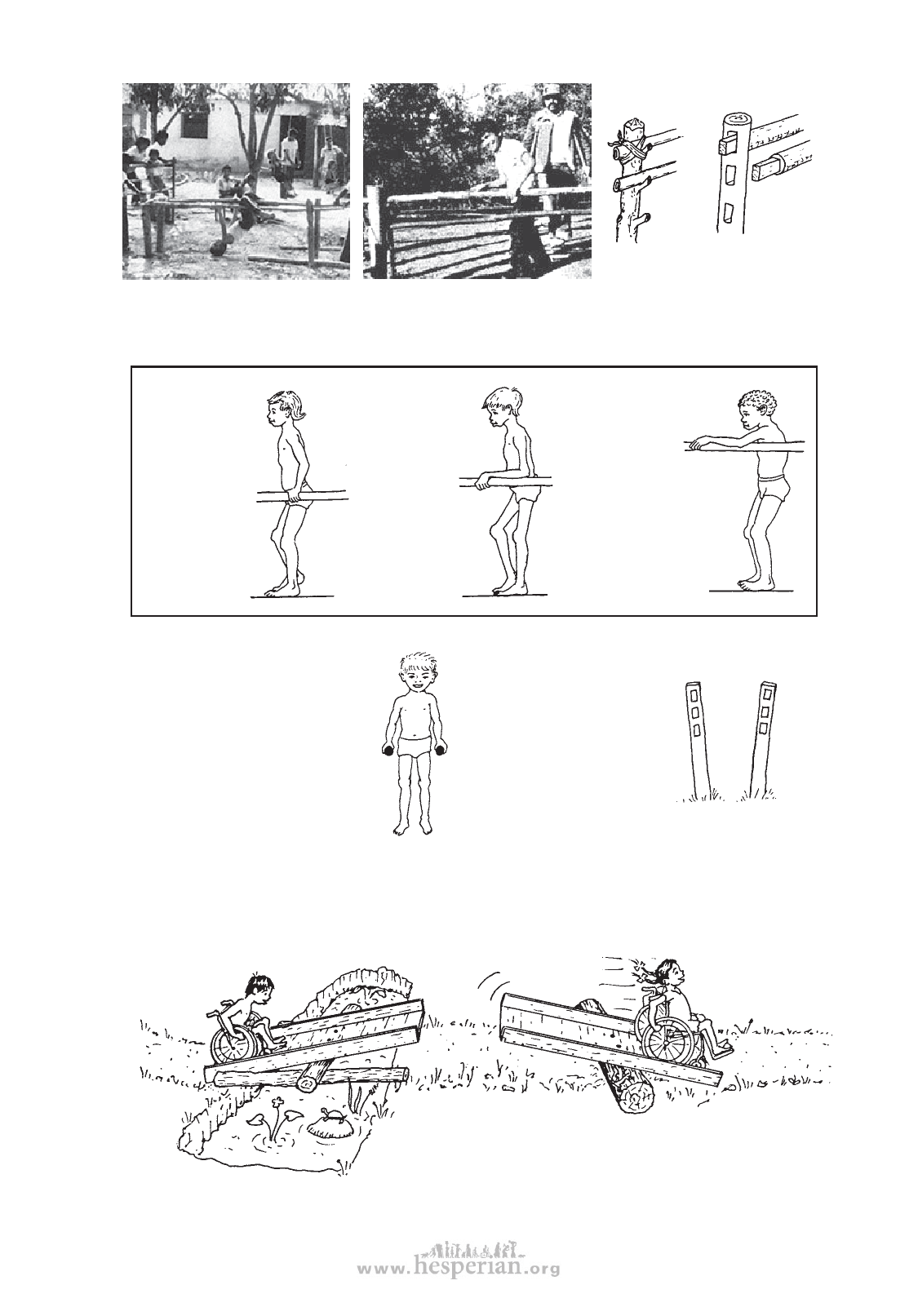
playgrounds 417
Simple parallel bars can be
used as gymnastic bars by
the able-bodied children...
For most
children, the
bar should
be about
hip height,
so that the
elbows are
a little bent
(the same
height as the
handles of
crutches).
and as bars for learning to
walk by disabled children.
Bars need to adjust
to different heights
for different children.
Here are 2 simple ways.
A child with
very weak
upper arms
may find
it easier
to rest his
forearms on
the bar.
The bar will
need to be
elbow high.
A child who
tends to slump
forward may
be helped to
stand straighter
if the bar is
high, so that
he has to stand
straighter to
rest his arms
on it.
SEPARATION OF BARS
Bars should be close enough
to leave only a little room
on either side of the child’s
body. Too close, they get in
the way. Too far apart makes
weight bearing more difficult.
Smaller children
require closer
bars. Therefore,
put uprights so
they are wider
higher up.
Simple, homemade bars, adjusted to the individual child’s needs, often provide more benefit than
expensive walkers or other equipment.
TEETER BRIDGE
This can be part of an ‘obstacle course’ for
wheelchairs, including hills, drops, curbs, rocky
ground, sand pits, and zig-zags between posts.
disabled village children